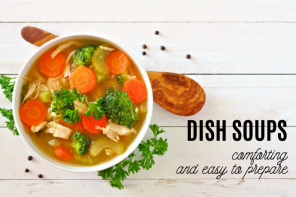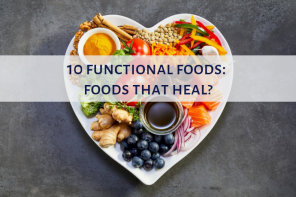Legumes have been gaining popularity with Canadians for some time now which is a good thing for everyone. The many benefits of legumes make them stars still in the shadows of other protein. With the current trend of eating less meat and the fact that the UN has proclaimed 2016 as International Year of Pulses, you can bet that they’ll have a place at your table! Let’s discover them because they’re really worth getting to know.
What’s a pulse?
Legumes are edible seeds from the Fabaceae plant that is harvested when they become pods. They’re used for direct consumption or even in food processing for things like starches or noodles.
 Originally, whether in South, Central or North America, legumes were part of basic food. Here in Canada, we’ve gradually replaced this source of plant protein with animal protein present in meat. However, this isn’t the case in all countries. For example, legumes are typical in Middle Eastern cuisine like hummus, curry, falafels, soups, salads, couscous, etc.
Originally, whether in South, Central or North America, legumes were part of basic food. Here in Canada, we’ve gradually replaced this source of plant protein with animal protein present in meat. However, this isn’t the case in all countries. For example, legumes are typical in Middle Eastern cuisine like hummus, curry, falafels, soups, salads, couscous, etc.
Varieties
 Pulses can be classified into four categories: peas, beans, broad beans and lentils. Of these, there are 20 varieties that are distinguished by their shape, colour and taste.
Pulses can be classified into four categories: peas, beans, broad beans and lentils. Of these, there are 20 varieties that are distinguished by their shape, colour and taste.
Canada grows different kinds of legumes which are:
- Dry peas – yellow peas, green peas, small yellow peas, pigeon peas and wrinkled peas
- Lentils – small, medium and large green lentils, red lentils, dark green speckled lentils and brown lentils
- Dry beans – white beans, pinto beans, black beans, dark red, light red or white kidney beans, cranberry beans, small red kidney beans, Great Northern beans, brown beans, adzuki beans
- Chickpeas – large or small Kabuli chickpeas and desi chickpeas
On the grocery store shelves, you can find canned legumes (already cooked) or dry. Choose the best format for your preferences. You’ll find advice on how to cook dry legumes a little further down in this article.

Pulses : a ton of benefits!
We just can’t say it enough: legumes have a many benefits. Whether from a nutritional, economic or environmental point of view, they only bring you good things!
Nutritional aspect
The Canadian Food Guide recommends eating legumes regularly. Why? Because they’re an excellent source of plant protein, fiber, iron and vitamins.
Protein is essential to maintaining good muscle mass, strength and energy. It’s also critical for proper body functioning, notably the immune system. In fact, kids should eat 1 to 2 servings of protein-rich food per day and teens and adults, 2 to 3 servings. As well, it’s a source of plant protein, so it has less fat than animal protein like meat.
The fact is that their high fiber content contributes to proper digestion, lower cholesterol levels, as well as controlling glucose levels.
Vitamins from group B that are present in legumes, help the body absorb fat, carbohydrates and protein that are all essential to proper functioning of the body.
Finally, iron helps build blood cells, so it’s necessary to eat food with iron in it every day.
In short, everyone wins when they eat more legumes because they have a lot of nutritional virtues.
Economical aspect
The cost of the grocery cart is only increasing mainly because of the cost of meat. Since 2012, the price of beef has increased 30%.
In order to lower your expenses as much as possible, it’s in your best interest to eat more plant protein and less animal protein. Legumes are the perfect solution to this problem: their low cost and many nutritional benefits make them the ideal alternative to meat.
Product | Quantity | Unit price | Price per serving* |
| Canned pulses | 540 ml | $ 1 | 32¢ for 175 g |
| Package of ground beef | 1 kg | $ 8 | 60¢ $ for 75 g |
*Note that a serving size of ¾ cup (175 g) of legumes is equivalent to ½ cup (75 g) of meat in terms of daily protein intake.
Environmental aspect
As well as being able to feed people cheaply, legumes are really environmental. You could even say that harvesting them has benefits:
- Unlike other plants, Fabaceae plants need very little nitrogen fertilizer to grow, therefore, their carbon footprint is practically non-existent which makes growing them very ecological.
- Legumes leave behind micro-organisms that actually feed soil thereby leaving it richer for future planting.
- Growing pulses requires very little water. In fact, it takes six times less water to grow a ton of legumes than a ton of beef.
So everything that’s harvested on the same soil as leguminous plants has a better yield because Fabaceae plants leave the earth damper and healthier, as well as having a smaller environmental footprint than cereals or oilseeds (plants that produce nuts).
Advice for integrating pulses into your diet

Changing or incorporating a new food habit isn’t the easiest thing to do, so take a look at our tips that will help you add legumes seamlessly to your diet.
Start slowly
Start by eating legumes as a side to a meal, like in salad, rice or a soup. Then gradually increase the amount of legumes in relation to the other food on your plate. Start with ones that are milder in taste like chickpeas, white beans or orange lentils.
We also suggest that you start slowly with legumes because they can lead to increased gas in your family! To avoid this, let your system gradually get used to this new food and soak dry legumes before cooking.
Add them to everyone’s favourite recipes
At the beginning, eating a meal where the main source of protein is plant can be intimidating, but legumes are easy to add to dishes that your family already loves:
- Make shepherd’s pie with half ground meat, half lentils.
- Add kidney beans to chili.
- Complement a veggie soup with chickpeas.
- Add this healthy cookie recipe to desserts!
There are a million ways to include legumes in your meals. Use your abundant imagination and dare – the possibilities are practically endless!
Use this opportunity to discover new flavours
Show off your home chef talents and discover new flavours that will become new classics! There are lots of recipes from other parts of the world that have legumes in them: couscous, curries, chilis, dals, cassoulets, etc.
If you’re not sure which recipe to choose or aren’t quite ready to risk it in the kitchen, take your family out to a restaurant. Mexican, Indian and Moroccan restaurant menus are bursting with dishes that have legumes in them. Then you’ll know what you like and try to recreate the dishes at home.
Cook them through
Cook legumes the right way and you’ll get the most out of them. Cooking gives them great taste and texture. Note that it’s preferable to soak legumes between 8 and 12 hours before cooking to ensure proper digestion. You don’t have to cook canned legumes, but we recommend rinsing them first.
Here’s a memory aid for cooking pulses after soaking:
Pulse | Cooking time (250 ml) |
| Chickpeas | 2 to 2.5 hours |
| Dry yellow peas | 3 hours |
| Dry green peas | 3 hours |
| White beans | 1 to 2 hours |
| Black-eyed peas | 40 minutes |
| Lima beans | 1 to 1.5 hours |
| Black beans | 1 to 1.5 hours |
| Pinto beans | 2 to 2.5 hours |
| Romano beans | 30 to 45 minutes |
| Pink beans | 1.5 hours |
| Red kidney beans | 1.5 to 2 hours |
| Soy beans | 2.5 to 3 hours |
| Green lentils | 30 to 45 minutes |
| Brown lentils | 20 to 25 minutes |
| Split peas | 1 hours |
| Azuki beans | 1.5 hours |
| Flageolet beans | 1.5 hours |
| Garbanzo beans | 2 hours |
| Mung beans | 45 minutes to 1 hour |
Whether you eat legumes in the comfort of your own home or at a restaurant, dare to try dishes from other cultures. It’s an excellent way to adopt them.
Recipes that whisk you away

With our globetrotting recipe suggestions and your dishes, you’ll travel the world:
France
Cassoulet with duck sausage: white beans
Brasil
Feijoada: black beans
Black beans soup: black beans
Mexico
Pork and vegetable chili: red kidney beans
Grilled fish tacos: black beans
Quesadillas: black beans
Chili lasagna: red kidney beans
Vegetarian burritos: black beans
Rice and beans casserole: kidney beans
India
Potato and vegetables curry: chickpeas
Roasted red pepper hummus: chickpeas
Dal soup: yellow split peas
Vegetable and lentil curry: lentils or chickpeas
Morocco
Vegetable couscous: chickpeas
Moroccan vegetarian soup: red lentils
Extra fine green bean and lentil salad: lentils
Greece
Three-bean salad: Romano beans, red kidney beans and chickpeas
Greek soup: orange lentils
Greek salad: chickpeas
Pulses are flexible, healthy, economical and ecological. That’s why the UN designated 2016 as International Year of Pulses. Now that you know more about how to prepare them, will you be a part of the movement?








